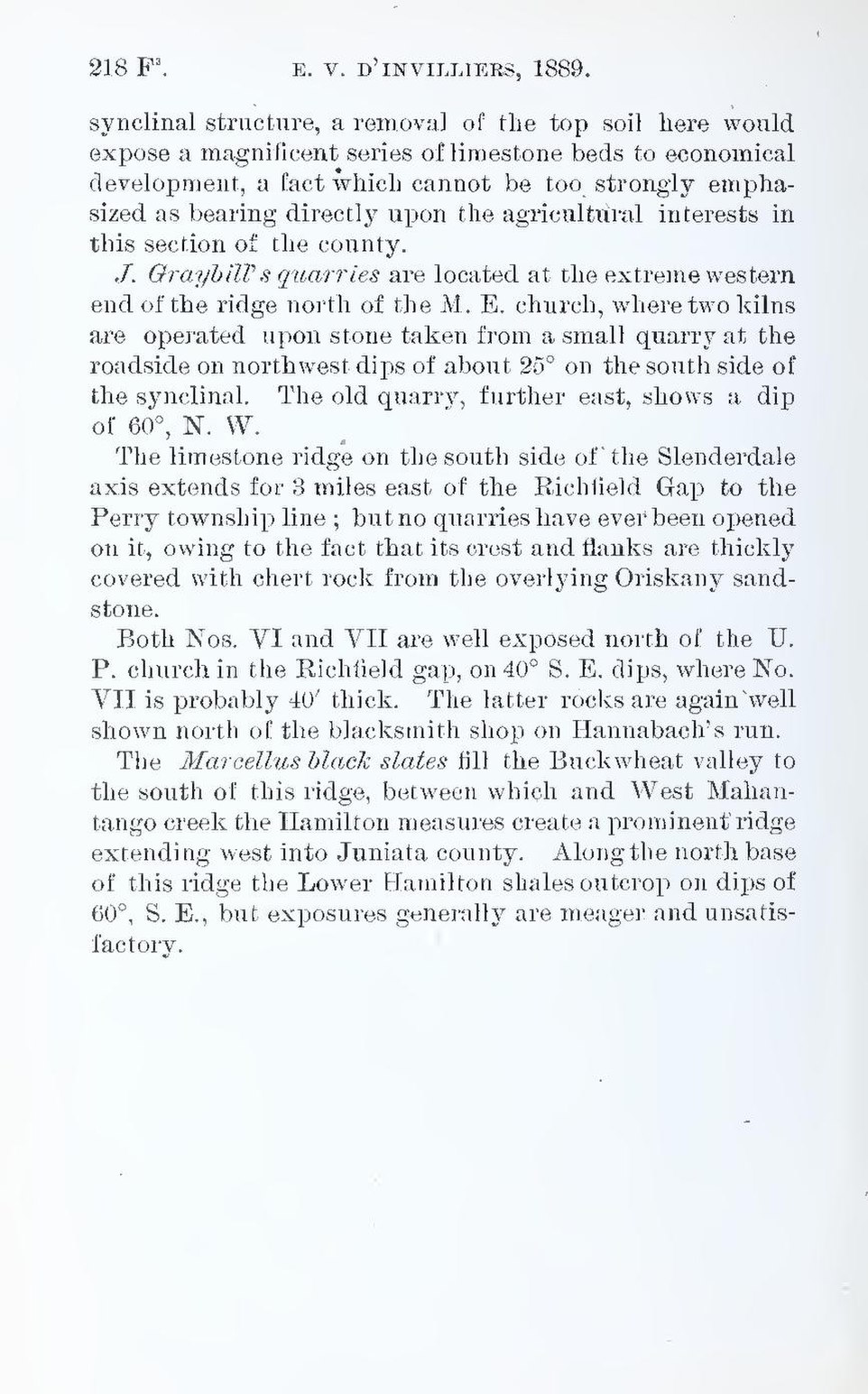synclinal structure, a removal of the top soil here would expose a magnificent series of limestone beds to economical development, a fact which cannot be too strongly emphasized as bearing directly upon the agricultural interests in this section of the county.
J. Graybill’s quarries are located at the extreme western end of the ridge north of the M. E. church, where two kilns are operated upon stone taken from a small quarry at the roadside on northwest dips of about 25° on the south side of the synclinal. The old quarry, further east, shows a dip of 60°, N. W.
The limestone ridge on the south side of the Slenderdale axis extends for 3 miles east of the Richfield Gap to the Perry township line; but no quarries have ever been opened on it, owing to the fact that its crest and flanks are thickly covered with chert rock from the overlying Oriskany sandstone.
Both Nos. VI and VII are well exposed north of the U. P. church in the Richfield gap, on 40° S. E. dips, where No. VII is probably 40′ thick. The latter rocks are again well shown north of the blacksmith shop on Hannabach’s run.
The Marcellus black slates till the Buckwheat valley to the south of this ridge, between which and West Mahantango creek the Hamilton measures create a prominent ridge extending west into Juniata county. Along the north base of this ridge the Lower Hamilton shales outcrop on dips of 60°, S. E., but exposures generally are meager and unsatisfactory.
